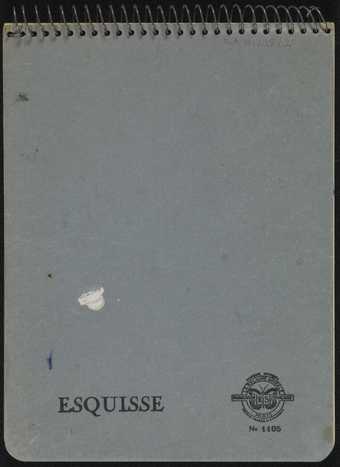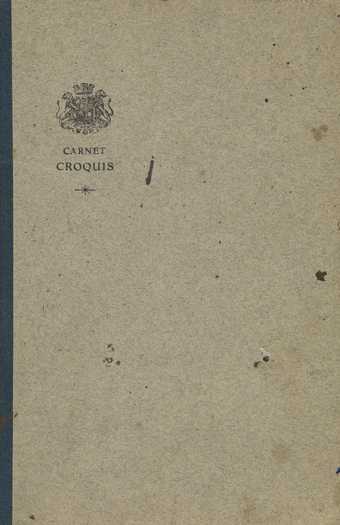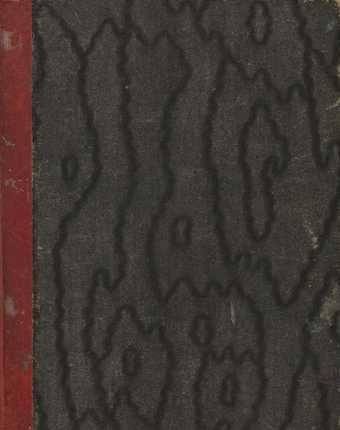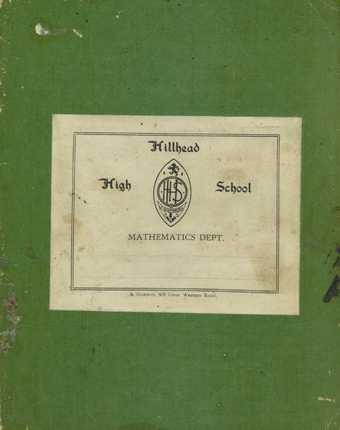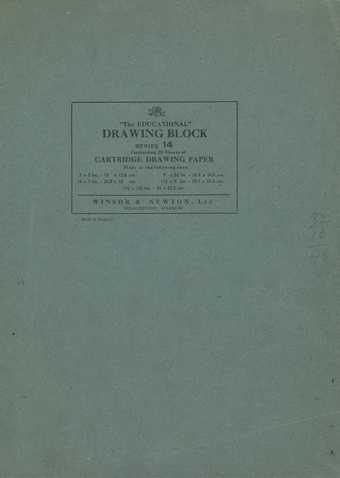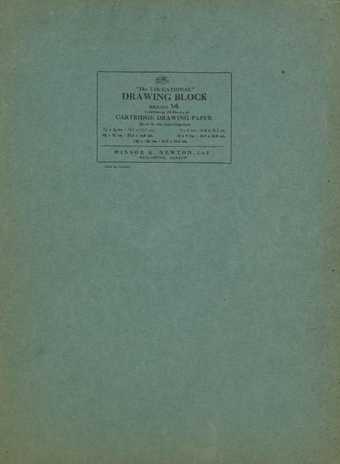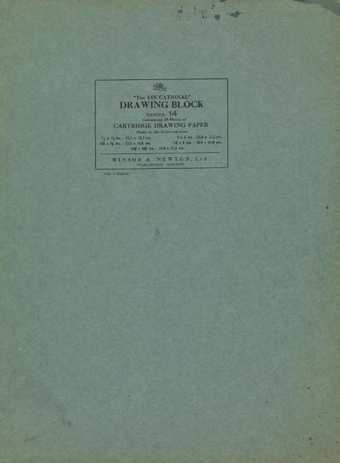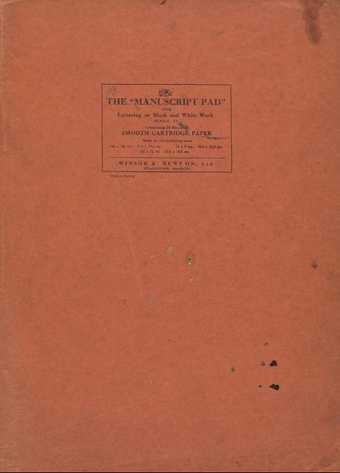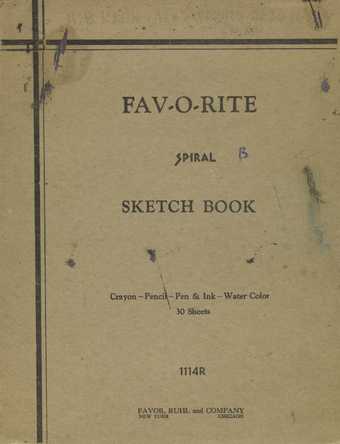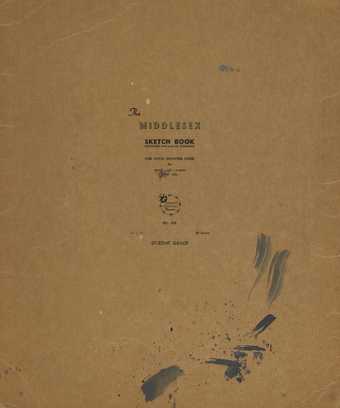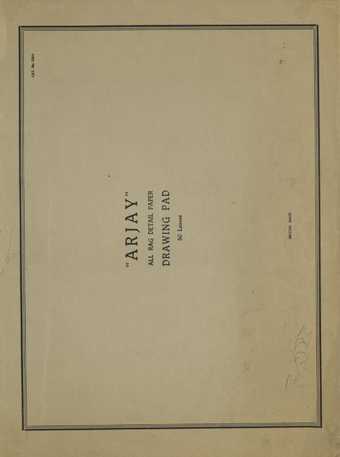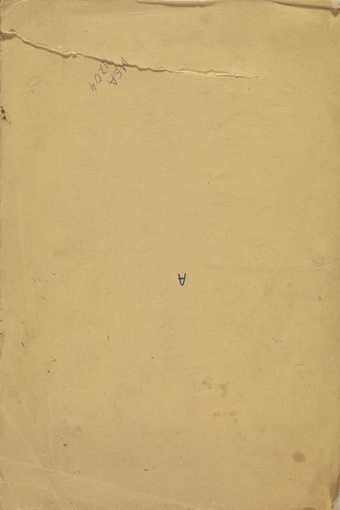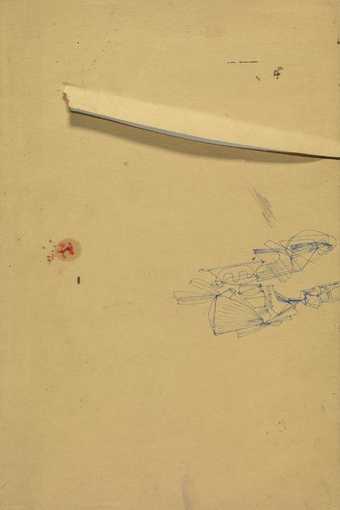Sketchbooks of Jankel Adler
[c.1927–49]

Jankel Adler, a Polish-Jewish figure and still-life painter, was born in Lodz, 1895. He first travelled to Germany in 1913 or 1914 to stay with his sisters in Barmen, and studied painting at the Barmen School of Arts and Crafts under Gustav Wiethüchter . Between 1918-19 he came back to Poland, but soon returned to Germany, settling in around 1922 in Düsseldorf. It was here that Adler became a friend of Paul Klee, and his style developed a more expressionistic style. Adler was a committed Internationalist and a signatory for the 'Urgent Appeal' calling all opposition parties to join together to oppose Nazism. He was forced to leave Germany, never to return, in 1933, spending the next few years moving across Europe before finally settling in Cagnes-sur-Mer to establish a studio in 1938. After the outbreak of the war, he joined the Polish Army in France and was evacuated in 1940 to Scotland; he was discharged in 1941. He first lived in Kirkcudbright, then from 1943 in London where he held several exhibitions and met Robert Colquhoun, Robert MacBryde and other young artists. He died at Aldbourne, Wiltshire, in 1949. These 16 sketchbooks cover the period of 1933-49 and are an important component in tracing the development of Adler's style throughout a tumultuous period of the artist's life. The pages take us across Europe, from Germany, to the south of France to the unfamiliar Glasgow. They provided the means for Adler to work when his itinerant existence kept him from easels and canvas, with many pages filled with studies and ideas which would be later worked into finished pieces. But mainly they allowed Adler to record his thought process and the fruits of his vivid imagination as he transformed and reworked the world around him from the ordered to the chaotic, from the figurative to the abstract. These sketchbooks were catalogued and digitised as part of the Émigré Art Archives Project, generously funded by the Marie-Louise von Motesiczky Charitable Trust. With thanks to Glenn Sujo's 'The Sketchbooks of Jankel Adler. A Critical Essay & Catalogue' (2011) for providing contextual and chronological information for the cataloguing and description of these sketchbooks.
- Collection Owner
- Jankel Adler 1895–1949
- Collection
- Tate Archive
- Acquisition
- Presented by Liane Aukin and David Aukin, November 2012.
- Reference
- TGA 201218
16 objects in this collection
- Title
- Sketchbooks of Jankel Adler
- Date
- [c.1927–49]
- Description
- Jankel Adler, a Polish-Jewish figure and still-life painter, was born in Lodz, 1895. He first travelled to Germany in 1913 or 1914 to stay with his sisters in Barmen, and studied painting at the Barmen School of Arts and Crafts under Gustav Wiethüchter . Between 1918-19 he came back to Poland, but soon returned to Germany, settling in around 1922 in Düsseldorf. It was here that Adler became a friend of Paul Klee, and his style developed a more expressionistic style. Adler was a committed Internationalist and a signatory for the 'Urgent Appeal' calling all opposition parties to join together to oppose Nazism. He was forced to leave Germany, never to return, in 1933, spending the next few years moving across Europe before finally settling in Cagnes-sur-Mer to establish a studio in 1938. After the outbreak of the war, he joined the Polish Army in France and was evacuated in 1940 to Scotland; he was discharged in 1941. He first lived in Kirkcudbright, then from 1943 in London where he held several exhibitions and met Robert Colquhoun, Robert MacBryde and other young artists. He died at Aldbourne, Wiltshire, in 1949. These 16 sketchbooks cover the period of 1933-49 and are an important component in tracing the development of Adler's style throughout a tumultuous period of the artist's life. The pages take us across Europe, from Germany, to the south of France to the unfamiliar Glasgow. They provided the means for Adler to work when his itinerant existence kept him from easels and canvas, with many pages filled with studies and ideas which would be later worked into finished pieces. But mainly they allowed Adler to record his thought process and the fruits of his vivid imagination as he transformed and reworked the world around him from the ordered to the chaotic, from the figurative to the abstract. These sketchbooks were catalogued and digitised as part of the Émigré Art Archives Project, generously funded by the Marie-Louise von Motesiczky Charitable Trust. With thanks to Glenn Sujo's 'The Sketchbooks of Jankel Adler. A Critical Essay & Catalogue' (2011) for providing contextual and chronological information for the cataloguing and description of these sketchbooks.
- Reference
- TGA 201218


